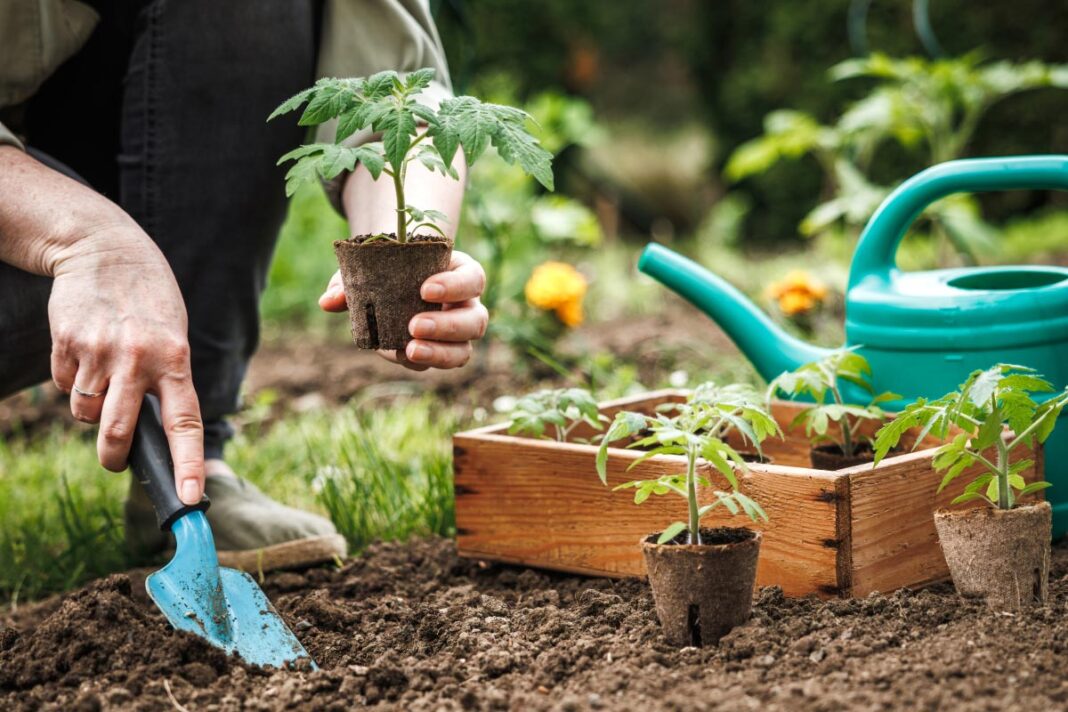Sustainability is the need of the hour. The basic concept behind this concept is to minimize the negative impact of human activities on the environment and preserve it. This principle can be easily implemented into gardening practices. While nurturing a garden may seem beneficial to the environment, the choice of certain gardening methods can contradict that intention. Sustainable gardening focuses on identifying and filtering out methods in favor of more eco-friendly alternatives.
Switch to Organic Gardening Techniques
A crucial part of maintaining a garden is keeping the plants nourished and free from pests. Generally, for ease and convenience, individuals prefer using chemicals for both—chemical fertilizers for nourishment and pesticides for driving away the pests. While these options are mostly effective, they can also be detrimental to the environment in the long run.
A tip for sustainable gardening would be to swap these chemicals with organic options. For the plants’ nutrients, one can rely on making compost or aged manure. They can be made using kitchen and garden waste, which further adds to one’s sustainability practices, since it reduces the amount of landfill-bound waste.
Likewise, one can also make organic pest repellents using kitchen ingredients such as garlic, mint, onions, lemons, and more. Apart from that, diatomaceous earth and essential oils also make for effective components for organic bug repellents.
Remove Weeds Manually
Another way to reduce the use of chemicals in gardening is to stop using them for weed removal. Instead, one can rely on manual techniques such as hand-pulling—a method that requires one to put in some extra elbow grease, accomplishing the objective without adding harmful chemicals into the soil. Moreover, chemical weed removers can also end up harming other plants in the garden when not used correctly. This can be prevented by the hand-pulling method of removal.
For weeds that are spread out, one can use the sunlight blocking technique. For that, all one has to do is cover the weed growth with a paper or black plastic so that they do not get any sunlight. This process gradually kills the weeds without harming the soil or other plants around them.
Adopt Water-Conserving Methods for the Garden
A sustainable garden design is also one that ensures mindful usage of water. Using oscillating sprinklers might be an easy solution to watering the garden, but there are definitely more sustainable ways. Drip irrigation, for instance, is one such practice. It minimizes the amount of water lost due to evaporation, leading to optimal watering of the plants. Soaker hoses also help achieve a similar result. Besides, one can also consider making mulch beds on the soil, as they help the soil retain a lot of moisture.
Another way to conserve water is to plant more drought-tolerant shrubs and perennials in the garden. This is also a low-maintenance garden idea that not only reduces the need for frequent watering but also ensures the garden thrives even during dry spells.
Make the Garden Wildlife-Friendly
A sustainable garden is also one that is more favorable to local wildlife—especially the pollinators. Bees, butterflies, etc., play a crucial role in plant reproduction and should always be welcomed in the garden. Apart from those, the presence of amphibians such as frogs and toads can also improve the life of the garden, since they feed on common garden pests such as slugs. To support such wildlife, one can create thriving spaces by adding flowering plants and shallow water features.
Choose Native Plants for the Garden
One of the simplest ways to make a garden more sustainable is by choosing native plants. These species are naturally adapted to the local climate, rainfall patterns, and soil conditions, which means they require relatively less water, fertilizer, and maintenance than non-native varieties. Not only that, native plants also play a key role in supporting local ecosystems by providing sustenance to native insects, birds, and other wildlife.
Ditch Gas-Powered Lawn Mowers
If a job can be accomplished without the use of fossil fuels, it should be. It is one of the best sustainable practices that one can adopt. The same applies to gardening, as well. For gardens that have lawns, it is beneficial to stop using gas-powered lawn mowers and swap them for electric or manual mowers. Both options are emission-free, which means they help reduce the carbon footprint and pollution.
Save Seeds
Instead of purchasing new seeds every year, consider saving the seeds from annual flowers and storing them until spring. This will not only help by saving money but also encourage a more self-sufficient gardening approach.
Consider Reducing the Lawn Area
Lawns certainly make garden spaces look neat and appealing. But, for a more sustainable garden, it is better to replace lawns with a variety of plants. Lawns often require significant amounts of water, fertilizer, and upkeep to maintain their overall quality. Additionally, they can dry out quickly during hot summer months. By opting for native plants, herbs, or food crops can cut down on resource usage and maintenance efforts. Furthermore, unlike traditional lawns, plants will be more inviting to the local wildlife. Herbs and food crops also provide the added benefit of home-grown produce for one’s consumption.


